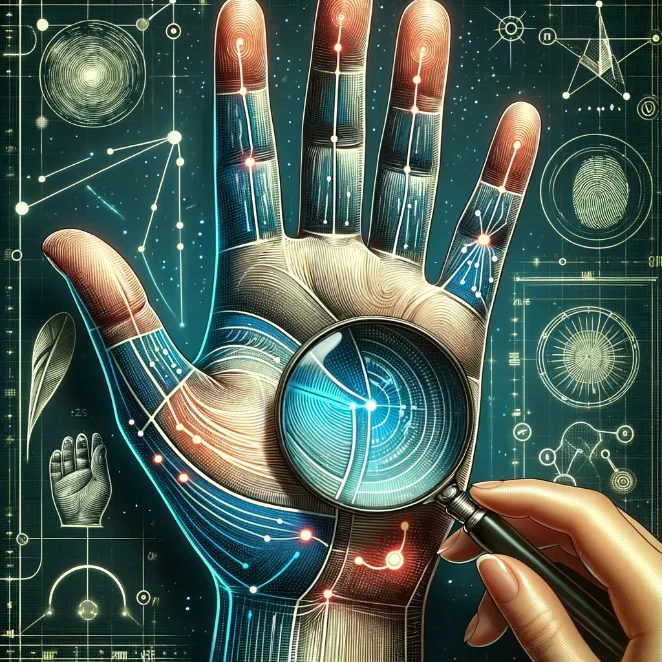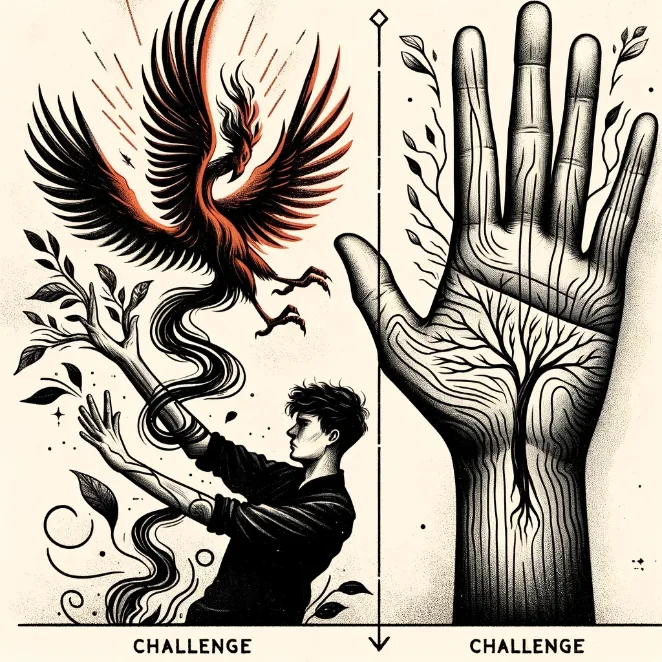
Palmistry In Modern Psychology
Palmistry, often regarded as a mystical practice, has found an unexpected ally in the realm of modern psychology. Beyond its traditional role of fortune-telling, palmistry is gaining recognition for its potential as a psychological tool that provides valuable insights into an individual's personality, behavior, and emotional patterns. In this article, we delve into the intriguing connection between palmistry and modern psychology, exploring how the study of the hand can contribute to a deeper understanding of human nature and behavior.
article by Nora Pennington
The Hand as a Mirror of the Mind
Palmistry operates on the belief that the hand is a reflection of the mind and soul. The lines, mounts, and features of the hand are thought to mirror an individual's psychological makeup. Modern psychology, too, seeks to unravel the complexities of the human mind. By examining the physical characteristics of the hand, palmistry offers a unique perspective that can complement psychological assessments.

Palmists often associate different parts of the hand with specific psychological attributes. For example, the fingers are believed to represent various aspects of personality—thumb symbolizing willpower, index finger indicating ego, middle finger representing balance, ring finger signifying creativity, and the little finger denoting communication skills. This holistic approach to character analysis aligns with the comprehensive view of personality in modern psychology.
Personality Traits Revealed
One of the key intersections between palmistry and psychology lies in the revelation of personality traits. The analysis of hand features, such as finger lengths, shape, and mounts, can provide valuable insights into an individual's character. For instance, long fingers may indicate a detail-oriented and analytical nature, while square-shaped palms may suggest practicality and stability.
 in palmistry. The image should feature a hand with a prominent Challenge Line running vert.JPEG)
Modern psychology employs various personality assessment tools, such as the Big Five personality traits (Openness, Conscientiousness, Extroversion, Agreeableness, and Neuroticism), to understand individuals better. Combining the insights from palmistry with psychological assessments offers a more holistic view of personality, allowing for a deeper understanding of a person's strengths, weaknesses, and tendencies.
Emotional Patterns and Stress Indicators
Palmistry also delves into emotional patterns and stress indicators, an area of great interest to modern psychology. The presence of specific markings, breaks, or islands on lines like the heart line can signal emotional challenges or traumatic experiences. These insights can be particularly valuable in therapy, helping clients uncover and address underlying emotional issues.

Moreover, palmistry can serve as an early warning system for stress-related health concerns. Changes in the hand's skin texture, nail health, and the appearance of stress lines can all be indicative of an individual's emotional well-being. This intersection of physical and psychological indicators provides a holistic approach to mental health assessment.
Self-Reflection and Empowerment
The practice of palmistry can also empower individuals on their psychological journey. By learning about their own hand features and their potential psychological implications, individuals gain a tool for self-reflection. This self-awareness can be a catalyst for personal growth, allowing individuals to understand their strengths and challenges better.
Moreover, the act of exploring one's hand can be therapeutic in itself, fostering a sense of connection between mind and body. It encourages mindfulness and self-acceptance, both central principles in modern psychology.

The Healing Touch of Palmistry
Beyond its diagnostic capabilities, palmistry can play a role in therapeutic practices. Some therapists incorporate palmistry into their sessions as a means of engaging clients in self-discovery and self-reflection. The act of examining one's own hand can be a grounding and centering exercise, helping individuals connect with their inner selves.
For those who have experienced trauma or emotional distress, palmistry can be a non-invasive and gentle way to explore their emotional journey. By identifying patterns and markers on the hand, individuals can gain a sense of validation for their experiences, which is a vital component of healing.
Palmistry and modern psychology may seem like unlikely companions, but their synergy offers a fascinating window into the human psyche. The study of the hand provides a tangible and visually accessible means of understanding personality, emotional patterns, and even stress indicators. Whether used as a therapeutic tool or a means of self-discovery, palmistry enriches our understanding of human nature and behavior, bridging the gap between the mind and the hand.
In a world where mental health and self-awareness are of paramount importance, the study of palmistry offers a unique and holistic approach that complements the efforts of modern psychology.
Published: 11/29/2023
Modified: 11/29/2023
More predictions
Come back here soon to learn more about yourself and your future


The Role Of Palmistry In Modern Wellness
In an era where mindfulness, self-awareness, and holistic well-being have gained paramount importance, ancient practices are experiencing a renaissance. Among these practices, palmistry, the art of interpreting the lines, mounts, and features of the palm, has found its place in the modern wellness landscape. Beyond fortune-telling, palmistry has evolved into a tool for self-discovery, empowerment, and achieving a balanced state of mental, emotional, and physical health. In this article, we delve into the evolving role of palmistry in modern wellness, shedding light on its potential benefits and its contribution to holistic self-care.


Digital Technology's Impact On Palm Reading
Palm reading, an ancient practice steeped in tradition and mysticism, has witnessed a remarkable transformation in the digital age. With the advent of advanced technology, the art of palmistry has not remained untouched. This article delves into the profound impact of digital technology on palm reading, exploring how modern tools have both enhanced and challenged this age-old practice, ushering it into the digital era.


The Synergy of Multiple Lines in Palmistry
Palmistry, the ancient practice of divination through the examination of palm lines, reveals a fascinating tapestry of information about an individual's life, personality, and destiny. While each major line on the palm holds significance on its own, it is in the synergy of multiple lines that the true depth of palmistry unfolds. In this article, we explore the intricate interplay between the heart line, head line, life line, and fate line, unveiling how their convergence paints a comprehensive portrait of a person's journey through life.